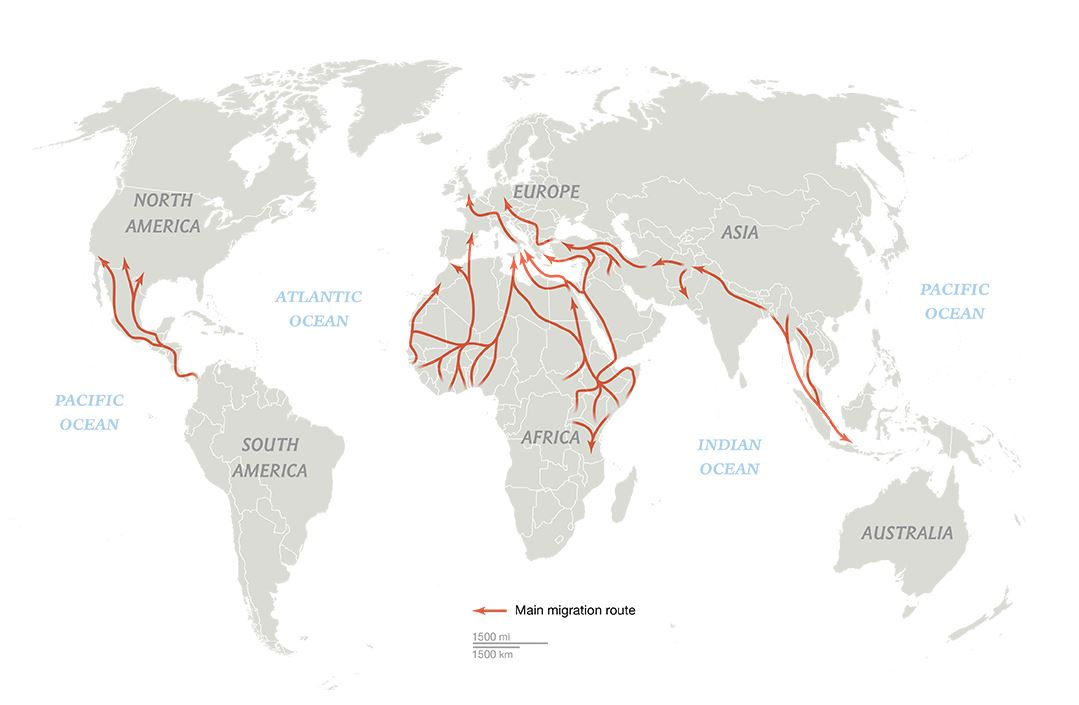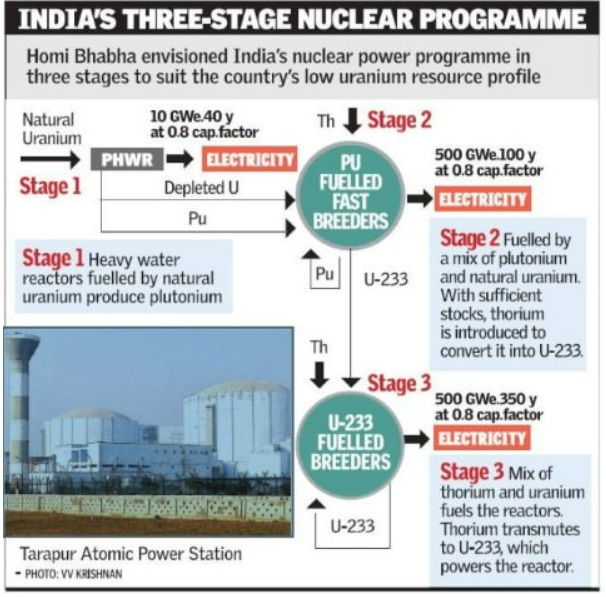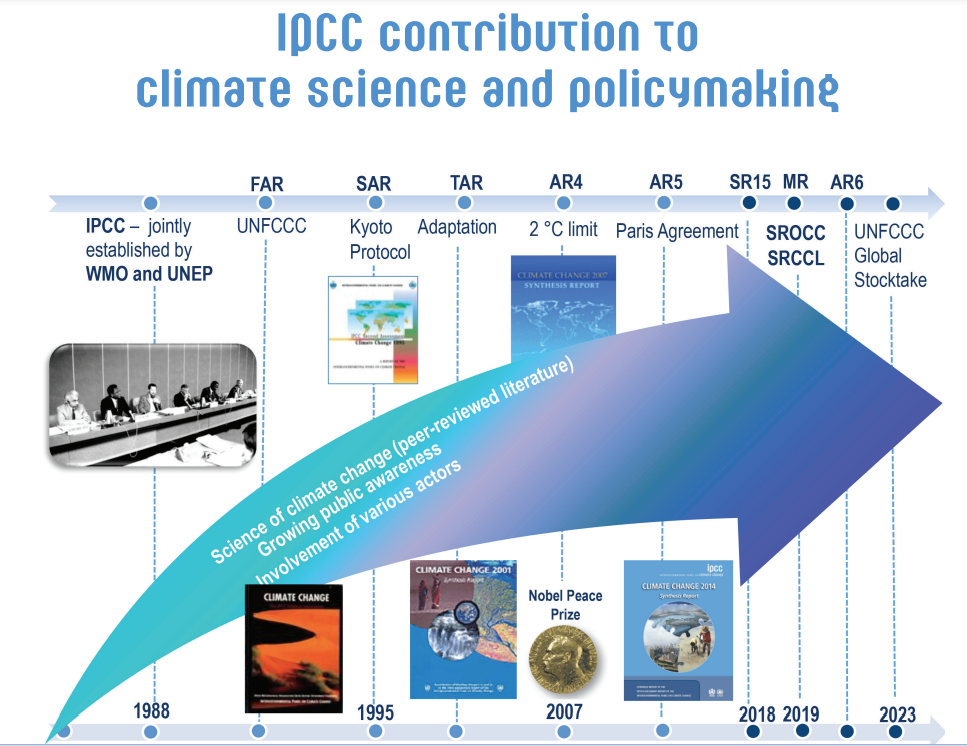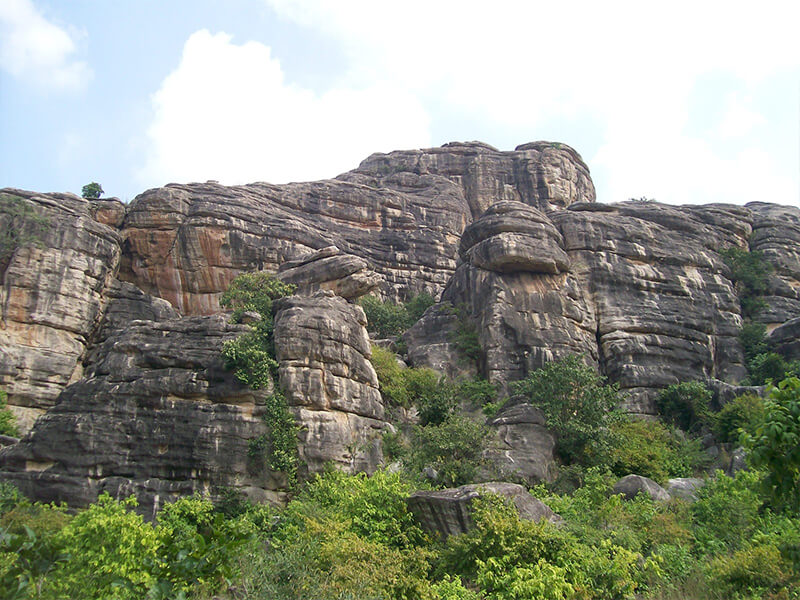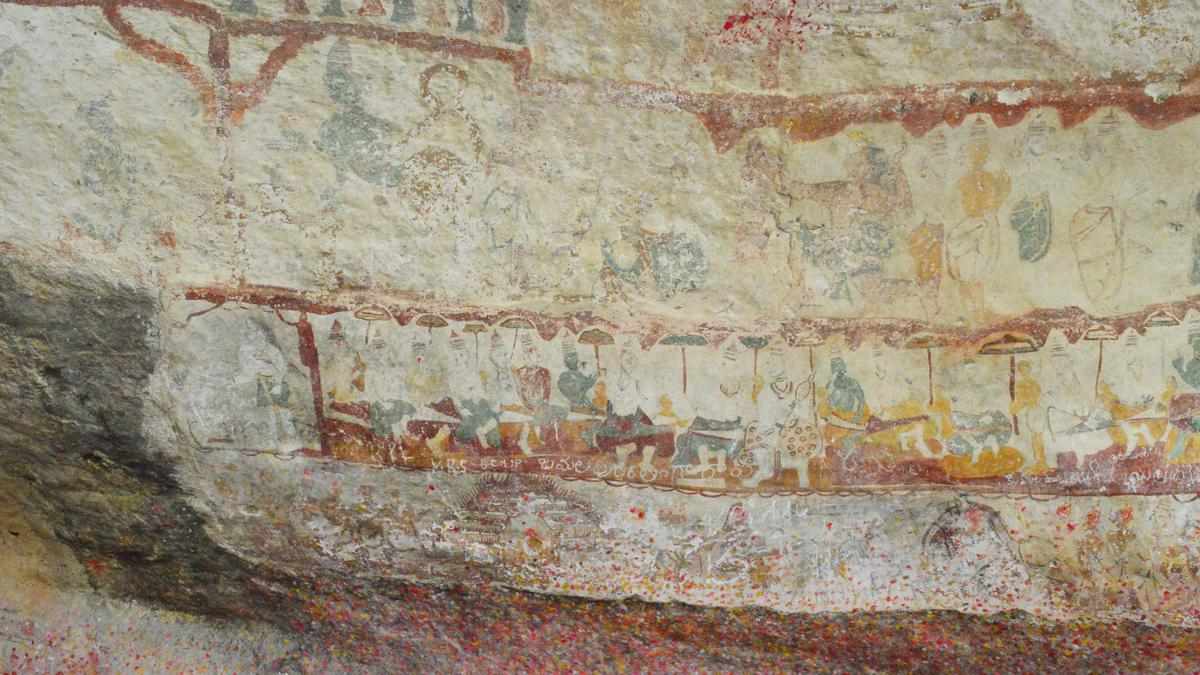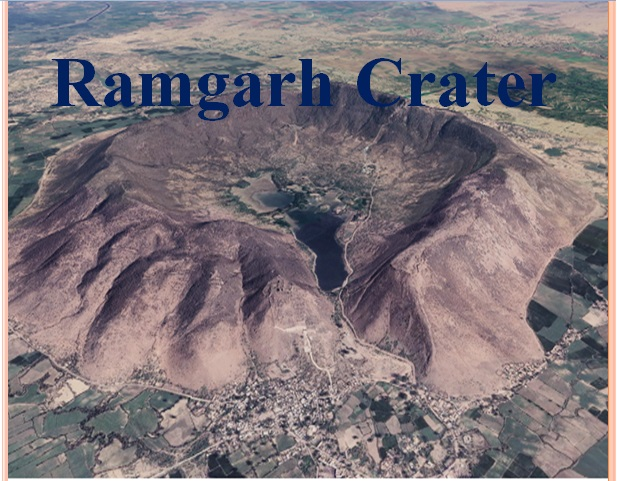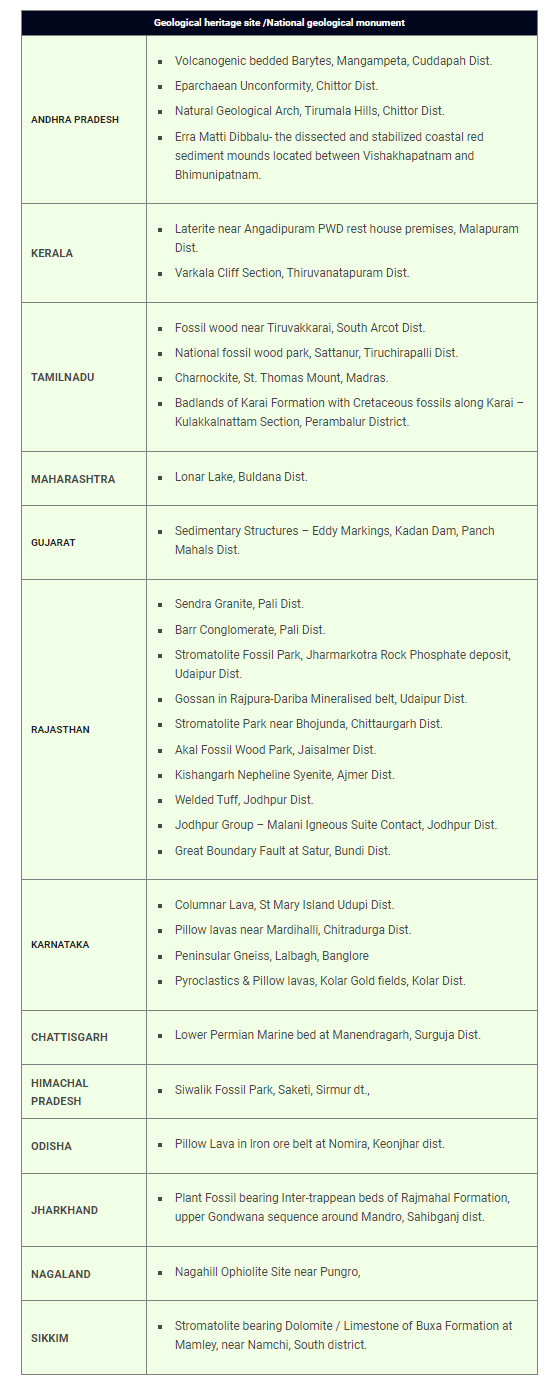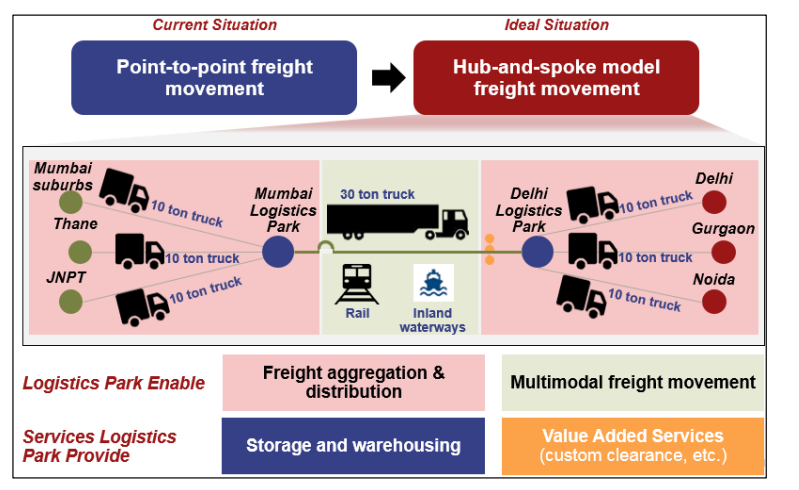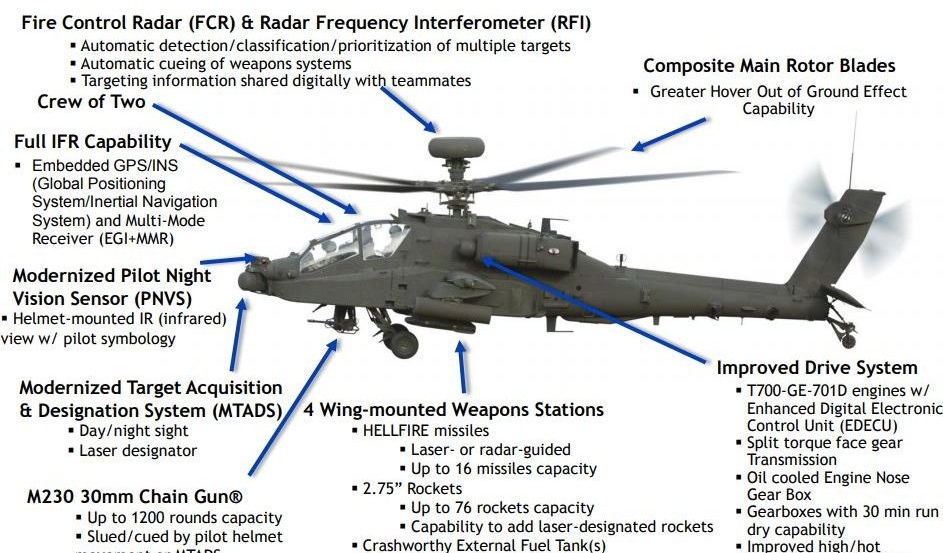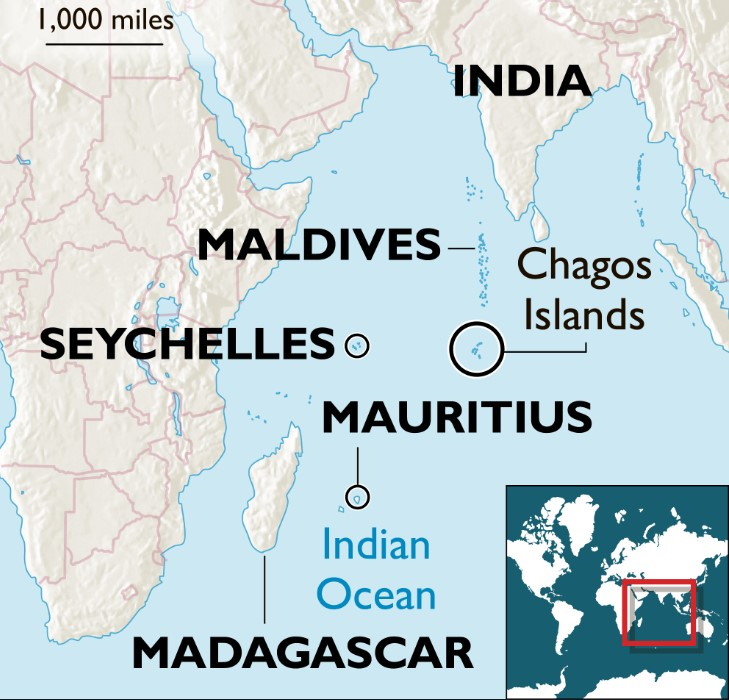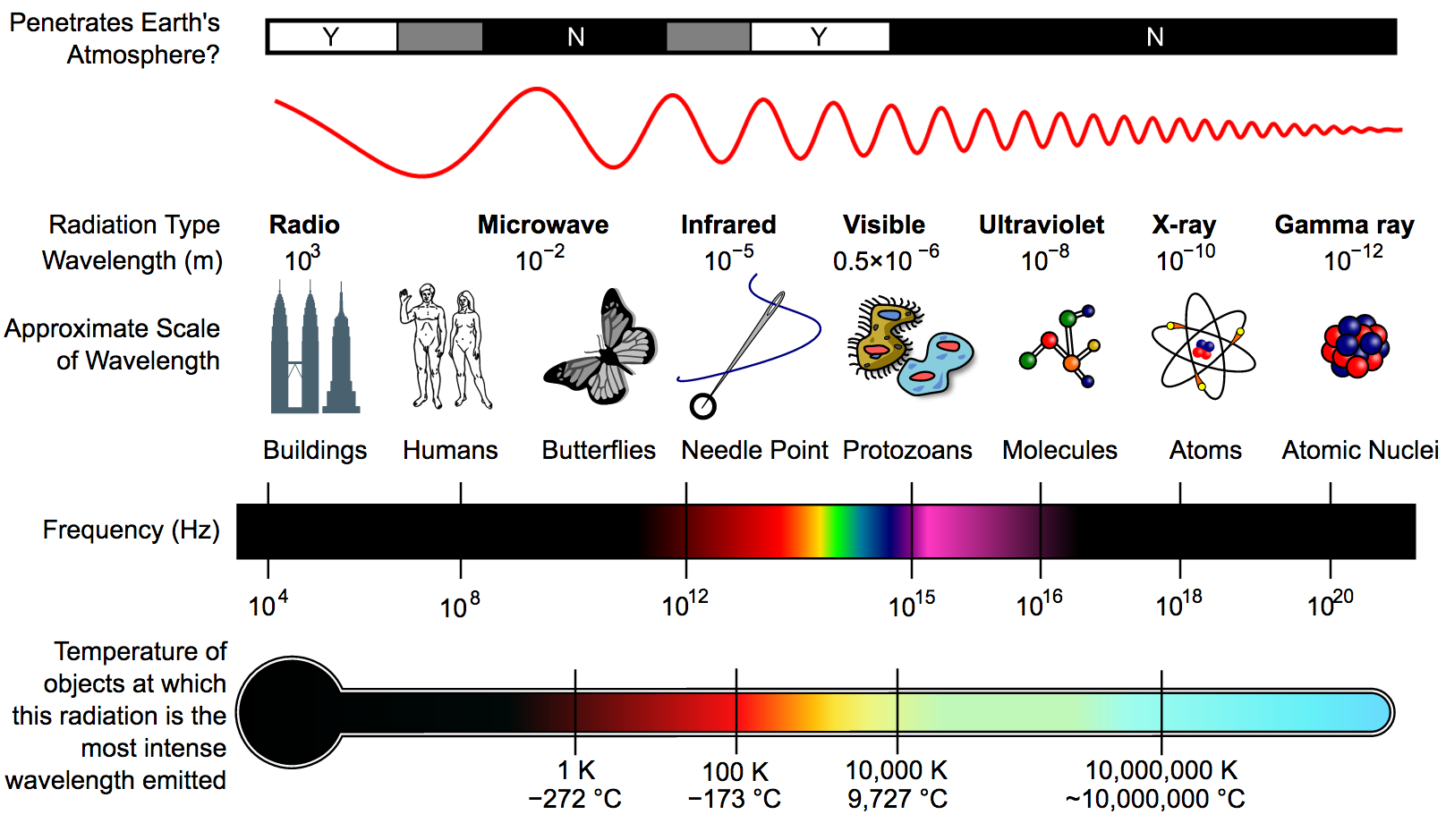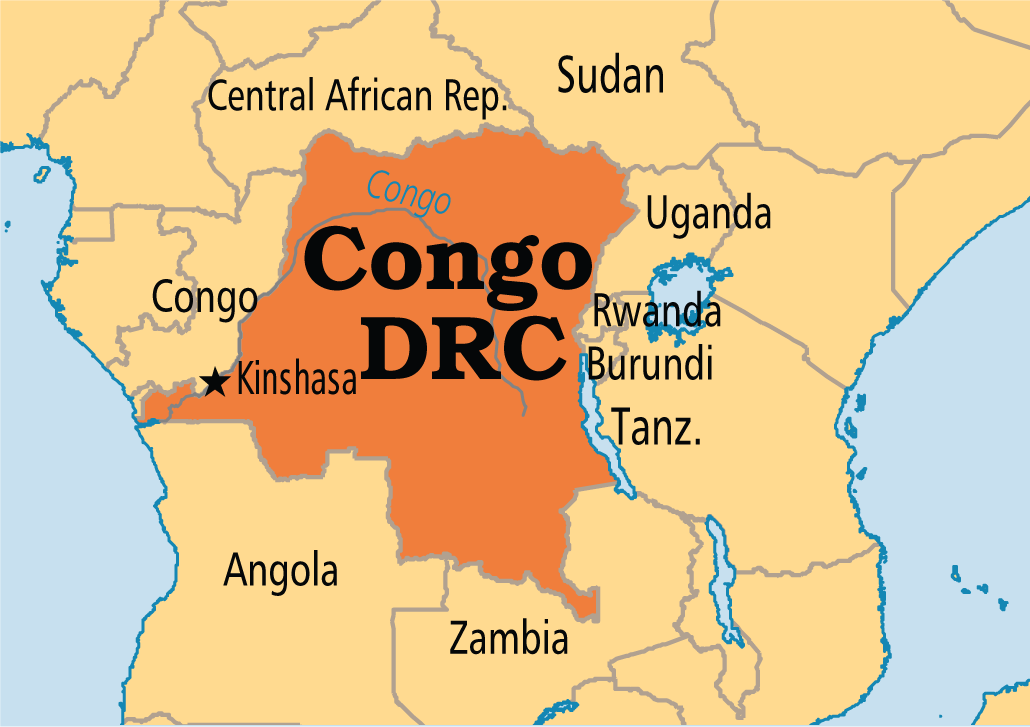Menace of Illegal Migration
For Prelims: International Organization for Migration, Missing Migrants Project, Internal Migration, Donkey flight, Global Compact for Safe, Orderly, and Regular Migration.
For Mains: Status of Migration Across the Globe, Major Challenges Faced by Migrants
Why in News?
Recently, the International Organization for Migration (IOM) has stated that a total of 8,565 migrants died on land and sea routes worldwide in 2023.
- IOM reported that the number of migrant deaths in 2023 increased by almost 20% compared to 2022.
- The "Missing Migrants" project by IOM, established in 2014, tracks these figures and was initiated after a surge in deaths in the Mediterranean and an influx of migrants on the Italian island of Lampedusa.
What is the International Organization for Migration?
- About:
- The International Organization for Migration originated in 1951 as the Provisional Intergovernmental Committee for the Movement of Migrants from Europe (PICMME) after World War II's upheavals.
- It underwent name changes from PICMME to the Intergovernmental Committee for European Migration (ICEM) in 1952, to the Intergovernmental Committee for Migration (ICM) in 1980, and finally to the International Organisation for Migration in 1989, reflecting its evolution into a migration agency.
- In 2016, IOM entered into an agreement with the United Nations, becoming a related organization.
- Members: It currently has 175 Member States and 8 states with Observer status.
- India became an IOM Member State on 18th June 2008.
- Crisis Management: Throughout its history, IOM has responded to various crises such as Hungary in 1956, Czechoslovakia in 1968, Chile in 1973, Vietnamese Boat People in 1975, Kuwait in 1990, Kosovo and Timor in 1999, and the Asian tsunami and Pakistan earthquake of 2004/2005.
What is the Status of Migration Across the Globe?
- About: Migration refers to the movement of people from one place to another, typically involving a change in residence.
- This movement can be within a country (internal migration) or between countries (international migration).
- It can be temporary or permanent, depending on the individual's intentions and circumstances.
- According to the International Organization for Migration, migrants currently constitute 3.6% of the global population.
- Major Causes:
- Economic Reasons: People often migrate in search of better job opportunities, higher wages, improved living standards, and access to essential services such as education and healthcare.
- Conflict and War: Armed conflicts, civil wars, and political instability can force people to flee their homes and seek refuge in safer areas or countries.
- Environmental Factors: Natural disasters such as floods, droughts, hurricanes, earthquakes, and climate change-related impacts can displace populations, leading to migration.
- Social and Political Factors: Discrimination, persecution, human rights violations, lack of freedom, and political oppression can compel individuals or communities to seek asylum or move to countries with more favourable conditions.
- Urbanization and Rural-Urban Migration: Rural residents may move to urban areas in search of employment, education, healthcare, and improved living standards, contributing to urbanization trends.
- Major Challenges Faced by Illegal Migrants:
- Physical Risks and Dangers: Illegal migrants (like those who opt for donkey flight) face numerous physical dangers throughout the journey, including treacherous terrains like the Darién Gap, lack of clean water, wild animals, and the threat of violence from criminal gangs.
- This can lead to injuries, illnesses, or even death during the journey.
- Legal Status and Rights: Undocumented migrants or those with irregular status often encounter legal hurdles, lack access to fundamental rights and services, and live under the constant threat of deportation, detention, or exploitation.
- Discrimination and Xenophobia: Migrants may face discrimination, prejudice, and hostility based on their nationality, ethnicity, religion, language, or cultural background, leading to social exclusion, marginalisation, and unequal treatment.
- Trafficking and Exploitation: Migrants, especially vulnerable groups such as women, and children are at risk of human trafficking, exploitation, abuse, and forced labour, particularly in informal or precarious work settings.
- Physical Risks and Dangers: Illegal migrants (like those who opt for donkey flight) face numerous physical dangers throughout the journey, including treacherous terrains like the Darién Gap, lack of clean water, wild animals, and the threat of violence from criminal gangs.
Note
Donkey flight:
- Donkey flight is a term used to describe an illegal immigration technique employed by people seeking unauthorised entry into countries like the United States, Canada, the United Kingdom, and Australia.
- According to the US Customs and Border Protection (USCBP), Indians are the 5th largest source of illegal migrants entering the US from the southwest border.
- 96,917 Indians were caught illegally crossing borders into the US between October 2022 and September 2023.
Darién Gap:
- A geographic region in the Isthmus of Darién or Isthmus of Panama connecting the American continents within Central America, consisting of a large watershed, forest, and mountains in Panama's Darién Province and the northern portion of Colombia's Chocó Department.
Way Forward
- Global Compact for Safe, Orderly, and Regular Migration (GCM): Implementing the objectives and commitments outlined in the GCM, a UN-led framework for addressing migration challenges through a cooperative, people-centred approach involving governments, civil society, and other stakeholders.
- Widening Legal and Safe Pathways: Enhancing legal and safe pathways for migration, including resettlement programs for refugees, family reunification mechanisms, labour migration schemes, and humanitarian visas.
- This can reduce the reliance on dangerous and illegal routes like the Donkey Flights.
- Combating Human Trafficking: Strengthening law enforcement and international cooperation to combat human trafficking and smuggling networks that exploit migrants.
- Regional Cooperation: Fostering regional cooperation among countries of origin, transit, and destination to develop joint strategies for migration management, information sharing, and capacity building.
- Provide Assistance to Returnees: Support programs that assist returning migrants with reintegration into their communities, including access to education, vocational training, healthcare, and psychosocial support.
UPSC Civil Services Examination Previous Year Question (PYQ)
Mains:
Q. “Refugees should not be turned back to the country where they would face persecution or human right violation”. Examine the statement with reference to the ethical dimension being violated by the nation claiming to be democratic with open society. (2021)
Q. Rehabilitation of human settlements is one of the important environmental impacts which always attracts controversy while planning major projects. Discuss the measures suggested for mitigation of this impact while proposing major developmental projects. (2016)
Q. Discuss the changes in the trends of labour migration within and outside India in the last four decades. (2015)
High-Level Committee Report on Simultaneous Elections
For Prelims: Simultaneous Elections, Municipalities and Panchayats, Election Commission of India, State Election Commissions, Article 356
For Mains: Simultaneous Elections, Significance and Challenges
Why in News?
In a significant move towards electoral reform, the High-level Committee on Simultaneous Elections, constituted under the chairmanship of Shri Ram Nath Kovind, former President of India, has proposed simultaneous elections for Lok Sabha, state Assemblies, and local bodies in India.
- The committee's report, submitted to President Droupadi Murmu, outlines comprehensive recommendations and amendments to the Constitution to facilitate this monumental change.
What are the Recommendations of the High-level Committee on Simultaneous Elections?
- Transition to Simultaneous Elections:
- Amendment to Article 82A:
- The Committee suggests amending Article 82A of the Constitution to empower the President to designate an "Appointed Date" for the commencement of simultaneous elections to the House of the People and Legislative Assemblies.
- State assemblies going to poll after this date would synchronize their terms with the Parliament, facilitating simultaneous elections.
- The Committee suggests amending Article 82A of the Constitution to empower the President to designate an "Appointed Date" for the commencement of simultaneous elections to the House of the People and Legislative Assemblies.
- Term Synchronization:
- If the recommendations are accepted and implemented after the 2024 Lok Sabha polls, the first simultaneous elections could potentially be held in 2029.
- Alternatively, if targeting the 2034 polls, the appointed date would be identified after the 2029 Lok Sabha polls.
- States with elections due between June 2024 and May 2029 would see their terms expire alongside the 18th Lok Sabha, even if it results in some state assemblies having terms of less than five years as a one-time measure.
- States like West Bengal, Tamil Nadu (2026), Punjab, Uttarakhand, Uttar Pradesh (2027), and Karnataka, Chhattisgarh, Telangana (2028) would synchronise their election cycles.
- The government elected after the 2024 polls would decide on the starting point for implementing simultaneous elections, either targeting 2029 or 2034 based on their preference.
- To maintain synchronicity in case of premature dissolution of Parliament or a state assembly, the committee recommended conducting fresh elections only for the remaining term, or the "unexpired term" until the next cycle of simultaneous polls.
- This measure ensures that any hung House or no-confidence motion does not affect the overall timeline for simultaneous elections.
- If the recommendations are accepted and implemented after the 2024 Lok Sabha polls, the first simultaneous elections could potentially be held in 2029.
- Amendment to Article 82A:
- Synchronisation of Local Body Elections:
- Parliament is advised to enact legislation, possibly through the introduction of Article 324A, to ensure the synchronization of Municipalities and Panchayats elections with General Elections.
- This legislation would determine the terms of local bodies and align their election schedules with national electoral timelines.
- Electoral Roll Preparation and Management:
- The Committee suggests amending Article 325 of the Constitution to enable the Election Commission of India(ECI) to prepare a single electoral roll and Elector’s Photo Identity Card (EPIC) applicable to all tiers of government in consultation with State Election Commissions.
- The electoral rolls for Lok Sabha are prepared and maintained by the ECI, while the electoral rolls for local bodies are prepared by the SEC.
- The Committee emphasises the importance of harmonisation between the ECI and State Election Commissions (SECs) to prevent duplication and safeguard voter rights.
- The Committee suggests amending Article 325 of the Constitution to enable the Election Commission of India(ECI) to prepare a single electoral roll and Elector’s Photo Identity Card (EPIC) applicable to all tiers of government in consultation with State Election Commissions.
- Logistical Arrangements and Expenditure Estimation:
- The Committee calls for the ECI to submit detailed requirements and expenditure estimates for simultaneous elections.
- To ensure seamless logistical arrangements, the Committee urges the ECI and SECs to develop comprehensive plans and estimates.
- These plans should encompass equipment needs, personnel deployment, and security measures.
- Impact on Governance and Development:
- The Committee underscores the importance of certainty in governance for effective decision-making and sustained development.
- It highlights the role of synchronized elections in averting policy paralysis and fostering a conducive environment for progress.
What are the Debates Regarding Simultaneous Elections?
- Arguments in Favour:
- Cost Efficiency:
- Holding simultaneous elections reduces the substantial recurring expenditure incurred by both the State and Central governments.
- Consolidating elections into one event minimises the costs associated with voter registration, polling stations, election staff, security deployment, and other logistical requirements.
- With a single electoral roll for all elections, administrative resources such as security forces and civilian officials are utilised more efficiently, saving public funds that can be redirected to other public causes.
- Enhanced Governance and Administration:
- Simultaneous elections streamline the electoral process, reducing the strain on governance and administration caused by frequent elections.
- Prolonged deployment of security and police forces during separate elections can strain national security and law enforcement efforts, which can be alleviated by holding elections simultaneously.
- The mass-scale transfers of officials and the disruption caused by the code of conduct during separate elections can impede the smooth functioning of government machinery, which can be mitigated through synchronised polls.
- Simultaneous elections streamline the electoral process, reducing the strain on governance and administration caused by frequent elections.
- Reduced Influence of Money in Politics:
- Holding simultaneous elections can lessen the role of money in politics by reducing the frequency of election campaigns and associated expenses.
- Campaign finance regulations can be more effectively enforced by the ECI at a national level, ensuring a level playing field for all parties and candidates.
- Holding simultaneous elections can lessen the role of money in politics by reducing the frequency of election campaigns and associated expenses.
- Mitigation of Divisive Politics:
- The 'one nation-one election' concept aims to reduce the divisive impact of regionalism, casteism, and communalism in mobilising voters.
- By focusing on national issues and promoting a unified electoral agenda, simultaneous elections can help transcend narrow interests and foster a sense of national unity.
- The 'one nation-one election' concept aims to reduce the divisive impact of regionalism, casteism, and communalism in mobilising voters.
- Enhanced Voter Engagement:
- Voter fatigue, resulting from frequent elections at different levels, can be alleviated by consolidating polls into a single event.
- Simultaneous elections can potentially increase voter turnout at the national level by reducing voter apathy and increasing the significance of each electoral exercise.
- Cost Efficiency:
- Arguments Against Simultaneous Elections:
- Federalism and Regional Representation:
- Simultaneous elections may undermine the principles of federalism by centralising the electoral process and potentially overshadowing regional and local issues with national issues.
- Constituent States, especially those governed by non-dominant parties at the national level, may feel marginalised or inadequately represented in a synchronised election scenario.
- National parties could gain an undue advantage over regional parties, undermining the federal spirit enshrined in the Constitution.
- Simultaneous elections may undermine the principles of federalism by centralising the electoral process and potentially overshadowing regional and local issues with national issues.
- Cost Implications:
- The implementation of simultaneous elections would require a significant investment in procuring additional Electronic Voting Machines (EVMs) and Voter Verifiable Paper Audit Trail Machines (VVPATs), adding to the financial burden.
- Biennial elections to Legislative councils/Rajya Sabha and by-elections would still necessitate separate polling events, contributing to ongoing costs despite synchronised elections.
- Impact on Accountability and Representation:
- Frequent elections at different levels of government help maintain accountability among elected representatives and ensure regular opportunities for voters to express their preferences.
- Synchronising elections may reduce the frequency of electoral accountability checks and limit the responsiveness of elected officials to the evolving needs of their constituents.
- Frequent elections at different levels of government help maintain accountability among elected representatives and ensure regular opportunities for voters to express their preferences.
- Required Constitutional Amendments:
- India's parliamentary democracy allows for the dissolution of Lok Sabha and State assemblies before the completion of their five-year terms.
- Fixed tenure of five years for all houses necessitates constitutional amendments to Articles 83, 85, 172, and 174, dealing with duration and dissolution.
- Amendments to Article 356, governing the imposition of President's rule in States, would also be required to accommodate simultaneous elections.
- India's parliamentary democracy allows for the dissolution of Lok Sabha and State assemblies before the completion of their five-year terms.
- Security Implications:
- During simultaneous elections, deploying large security forces for election duty could potentially weaken national security, as it diverts them from border protection.
- Federalism and Regional Representation:
What are the Constitutional Provisions Regarding the Simultaneous Elections?
| Constitutional Provision | Description |
| Article 83 | Specifies the duration of the Lok Sabha (House of the People), stating that it shall continue for five years from its first meeting unless dissolved earlier. |
| Article 172 | Pertains to the duration of State Legislative Assemblies, declaring that a Legislative Assembly shall continue for five years from the date of its first meeting. |
| Article 324 | Empower the ECI to supervise, direct, and control the preparation of electoral rolls and conduct of elections to the Parliament, State Legislatures, and the offices of the President and Vice-President. |
| Article 356 | Allows for the imposition of the President's Rule in a State in case of failure of the constitutional machinery, leading to direct rule by the President through the Governor. |
| Representation of People Act, 1951 | Provides the legal framework for conducting elections in India, covering aspects such as electoral rolls, qualifications for membership, and election conduct. |
History of Simultaneous Elections in India
- Simultaneous elections in India, where both the Lok Sabha and State Legislative Assemblies are elected together, were practised during the initial years after independence in 1952, 1957, and 1962.
- However, due to various factors such as political instability, early dissolution of State Assemblies, and the need for separate elections to address regional issues, the practice of simultaneous elections gradually faded.
- In 2019, only four States (Andhra Pradesh, Arunachal Pradesh, Odisha, and Sikkim) had their assembly elections, along with the Lok Sabha.
Countries with Simultaneous Elections
- South Africa:
- Elections to the National Assembly and provincial legislatures occur simultaneously every five years.
- The President of South Africa is elected by the National Assembly.
- Sweden:
- The Prime Minister of Sweden is elected by the legislature every four years.
- Germany:
- The Chancellor of Germany is elected by the legislature every four years.
- Lack of confidence in the Chancellor can only be resolved by electing a successor.
- Britain:
- The Fixed-term Parliaments Act, 2011 was passed to provide a sense of stability and predictability to the British Parliament and its tenure. It provided that the first elections would be held on the 7th of May, 2015 and on the first Thursday of May every fifth year thereafter.
What are the Various Other Recommendations Regarding the Simultaneous Elections?
- Previous Reports:
- The issue of simultaneous elections has been addressed in reports by the Law Commission (1999), and the Parliamentary Standing Committee on Personnel, Public Grievances, Law and Justice (2015). Additionally, the Law Commission submitted a draft report in 2018.
- Recommendations Summary:
- Clubbing Elections:
- Proposals suggest combining Lok Sabha elections with nearly half of the State assembly elections in one cycle while holding the remaining State assembly elections in another cycle after two and a half years.
- This would require amending the Constitution and the Representation of the People Act, 1951, to adjust the tenures of existing assemblies.
- Proposals suggest combining Lok Sabha elections with nearly half of the State assembly elections in one cycle while holding the remaining State assembly elections in another cycle after two and a half years.
- No-Confidence Motion:
- Any no-confidence motion in the Lok Sabha or Legislative Assembly should be accompanied by a confidence motion for forming an alternate government.
- If dissolution of the Lok Sabha or State Assembly is unavoidable, the newly constituted House should serve only the remainder period of the original House, discouraging premature dissolution and encouraging exploration of forming an alternate government.
- Any no-confidence motion in the Lok Sabha or Legislative Assembly should be accompanied by a confidence motion for forming an alternate government.
- Bye-Elections:
- Bye-elections due to death, resignation, or disqualification of members can be grouped together and conducted once a year for efficiency.
- Clubbing Elections:
UPSC Civil Services Examination Previous Year Question (PYQ)
Prelims
Q1. Consider the following statements: (2020)
- According to the Constitution of India a person who is eligible to vote can be made a minister in a State for six months even if he/she is not a member of the Legislature of that State.
- According to the Representation of People Act, 1951, a person convicted of a criminal offense and sentenced to imprisonment for five years is permanently disqualified from contesting an election even after his release from prison.
Which of the statements given above is/are correct?
(a) 1 only
(b) 2 only
(c) Both 1 and 2
(d) Neither 1 nor 2
Answer: (d)
Q2. Consider the following statements: (2017)
- The Election Commission of India is a five-member body.
- The Union Ministry of Home Affairs decides the election schedule for the conduct of both general elections and bye-elections.
- Election Commission resolves the disputes relating to splits/mergers of recognised political parties.
Which of the statements given above is/are correct?
(a) 1 and 2 only
(b) 2 only
(c) 2 and 3 only
(d) 3 only
Answer: (d)
Mains
Q.1 ‘Simultaneous election to the Lok Sabha and the State Assemblies will limit the amount of time and money spent in electioneering but it will reduce the government’s accountability to the people’ Discuss. (2017)
Challenges of Handling Nuclear Waste
For Prelims: Prototype fast breeder reactor (PFBR), Uranium and plutonium, Nuclear waste, Spent fuel, Liquid waste treatment facilities, International Panel on Fissile Materials (IPFM).
For Mains: Developments Related to Nuclear Energy, Ways to Enhance Nuclear Power Capacity, Issues related to Nuclear Waste
Why in News?
Recently, India loaded the core of its long-delayed prototype fast breeder reactor (PFBR) vessel, bringing it to the cusp of stage II — powered by uranium and plutonium — of its three-stage nuclear programme.
- By stage III, India hopes to be able to use its vast reserves of thorium to produce nuclear power.
- Managing nuclear waste poses a significant challenge due to the widespread use of nuclear power.
Prototype Fast Breeder Reactor (PFBR):
- A breeder reactor is a nuclear reactor that generates more fissile material than it consumes by irradiation of fertile material, such as Uranium-238 or Thorium-232 that is loaded into the reactor along with fissile fuel.
- These are designed to extend the nuclear fuel supply for electric power generation.
- PFBR is a 500-megawatt electric (MWe) fast-breeder nuclear reactor presently being constructed at the Madras Atomic Power Station in Kalpakkam (Tamil Nadu).
- It is fuelled by Mixed Oxide (MOX) Fuel.
What is Nuclear Waste?
- In a fission reactor, neutrons bombard the nuclei of atoms of certain elements. When one such nucleus absorbs a neutron, it destabilises and breaks up, yielding some energy and the nuclei of different elements.
- For example, when the uranium-235 (U-235) nucleus absorbs a neutron, it can fission to barium-144, krypton-89, and three neutrons. If the ‘debris’ (barium-144 and krypton-89) constitute elements that can’t undergo fission, they become nuclear waste.
- Fuel loaded into a nuclear reactor becomes irradiated and must eventually be removed, at which point it is known as spent fuel.
- Nuclear waste is highly radioactive and needs to be stored in facilities reinforced to prevent leakage into and/or contamination of the local environment.
Note
- Fission is a process in which the nucleus of an atom splits into two or more smaller nuclei and some byproducts.
- When the nucleus splits, the kinetic energy of the fission fragments (primary nuclei) is transferred to other atoms in the fuel as heat energy, which is eventually used to produce steam to drive the turbines.
- Fusion is defined as the combining of several small nuclei into one large nucleus with the subsequent release of huge amounts of energy.
- Harnessing fusion, the process that powers the Sun could provide a limitless, clean energy source.
- In the sun, the extreme pressure produced by its immense gravity creates the conditions for fusion to happen.
- Harnessing fusion, the process that powers the Sun could provide a limitless, clean energy source.
How can Nuclear Waste be Managed Safely and Effectively?
- The primary challenge is managing spent fuel, which is hot and radioactive. It must be submerged in water for several decades before it can be transferred to dry casks for long-term storage once it has cooled.
- All countries with longstanding nuclear power programmes have accumulated a considerable inventory of spent fuel.
- For example, the US had 69,682 tonnes (tn), Canada 54,000 tn, and Russia 21,362 tn.
- Depending on radioactivity levels, the storage period can run up to a few millennia (1000 years), as they have to be isolated from human contact for periods of time that are longer than anatomically modern Homo sapiens have been around on the planet.
- Nuclear power plants also have liquid waste treatment facilities.
- Japan is currently discharging, after treatment, such water from the Fukushima nuclear power plant into the Pacific Ocean.
- Other such waste, depending on their hazard, can be evaporated or “chemically precipitated” which means the sludgy substance can be managed by either being soaked up by solid materials or burned.
- Liquid high-level waste contains “almost all of the fission products produced in the fuel”. It is vitrified to form a storable glass.
- Nuclear power plants also have liquid waste treatment facilities.
- Some experts advocate for geological disposal, where the waste is sealed in special containers and buried underground in granite or clay.
- Another way to deal with the spent fuel is Reprocessing — which separates fissile from non-fissile material in spent fuel.
- The material is chemically treated to separate fissile material left behind from the non-fissile material.
- Because spent fuel is so hazardous, reprocessing facilities need specialised protections and personnel of their own.
- Such facilities present the advantage of higher fuel efficiency but are also expensive.
- Reprocessing also yields weapons-usable (different from weapons-grade) plutonium.
- Weapons-grade plutonium is highly pure, ideal for efficient and compact nuclear weapons.
- Weapons-usable plutonium, including reactor-grade or from dismantled weapons, may require more material or special designs, impacting efficiency and design options.
What are the Challenges in Managing Nuclear Waste?
- Geological Disposal Leakage: The geological disposal of nuclear waste poses the risk of radioactive material being exposed to humans in the event that containers are disturbed, for instance, through nearby excavation activities.
- Example: Waste Isolation Pilot Plant, US, has a licence to store waste for a few millennia. In 2014, an accident at the site released small quantities of radioactive materials into the environment, revealing serious failures in its maintenance.
- Exclusion of Private Sector: Private sector involvement often drives innovation through competition and market incentives. Without private sector participation, there may be less incentive to develop new technologies and processes for more efficient and effective nuclear waste treatment.
- Unutilized Fund: The US’s Nuclear Waste Policy Act of 1982 mandated that a portion of electricity generated from nuclear power be allocated to a 'Nuclear Waste Fund,' which would finance a geological disposal facility.
- Despite amassing a corpus of USD 40 billion as of July 2018, the fund has faced criticism for remaining unutilized for its intended purpose.
- Lack of International Cooperation: Stakeholders often lack cooperation, hindering effective management of nuclear waste. As nuclear waste is a global issue, international collaboration is essential to share knowledge, develop best practices, and ensure responsible management across all countries utilizing nuclear energy.
How does India handle nuclear waste?
- According to a 2015 report from the International Panel on Fissile Materials (IPFM), India has reprocessing plants in Trombay, Tarapur, and Kalpakkam.
- The Trombay facility reprocesses 50 tonnes of heavy metal per year (tHM/y) as spent fuel from two research reactors to produce plutonium for stage II reactors as well as nuclear weapons.
- Of the two in Tarapur, one used to reprocess 100 tHM/y of fuel from some pressurised heavy water reactors (stage I) and the other, commissioned in 2011, has a capacity of 100 tHM/y.
- The third facility in Kalpakkam processes 100 tHM/y.
- The report also suggested the Tarapur and Kalpakkam facilities operate with a combined average capacity factor of around 15%.
Way Forward
- Reprocessing: It involves separating usable materials from spent nuclear fuel. Reprocessing allows for the recycling of valuable elements like plutonium and uranium, reducing the volume of high-level waste that requires long-term storage.
- Vitrification: The process involves encasing radioactive waste in glass, which immobilises the hazardous components and prevents leaching into the environment.
- It is used for high-level radioactive waste and helps ensure long-term stability.
- Research and Development: Need to invest in research to explore alternative disposal methods and innovative technologies for nuclear waste management.
- This includes investigating advanced materials for containment, exploring geological disposal options, and developing more efficient waste treatment processes.
- Regulatory Oversight: Strict regulatory frameworks are essential to ensure the safe handling, transportation, and storage of nuclear waste. India's regulatory agencies monitor compliance with safety standards and enforce regulations to mitigate environmental and health risks associated with nuclear waste.
- International Cooperation: Nuclear waste is a global issue. International collaboration is necessary to share knowledge, develop best practices, and ensure responsible management across all countries utilizing nuclear energy.
UPSC Civil Services Examination, Previous Year Question (PYQ)
Prelims
Q. India is an important member of the ‘International Thermonuclear Experimental Reactor’. If this experiment succeeds, what is the immediate advantage for India? (2016)
(a) It can use thorium in place of uranium for power generation
(b) It can attain a global role in satellite navigation
(c) It can drastically improve the efficiency of its fission reactors in power generation
(d) It can build fusion reactors for power generation
Ans: (d)
Q. The function of heavy water in a nuclear reactor is to (2011)
(a) Slow down the speed of neutrons
(b) Increase the speed of neutrons
(c) Cool down the reactor
(d) Stop the nuclear reaction
Ans: (a)
Q. In India, why are some nuclear reactors kept under “IAEA safeguards” while others are not? (2020)
(a) Some use uranium and others use thorium
(b) Some use imported uranium and others use domestic supplies
(c) Some are operated by foreign enterprises and others are operated by domestic enterprises
(d) Some are State-owned and others are privatelyowned
Ans: (b)
Mains:
Q. Give an account of the growth and development of nuclear science and technology in India. What is the advantage of fast breeder reactor programme in India? (2017)
IPCC Reports and Equity in Climate Change Mitigation
For Prelims: UN Intergovernmental Panel on Climate Change (IPCC), Integrated Assessment Models (IAMs), Carbon Capture and Storage (CCS), UN Framework Convention on Climate Change (UNFCCC).
For Mains: IPCC Reports and Equity in Climate Change Mitigation, Environmental pollution and degradation.
Why in News?
Recently, a study delved into over 500 future emissions scenarios evaluated by the UN Intergovernmental Panel on Climate Change (IPCC). These scenarios offer projections for the world's climate trajectory.
- The findings of the study shed light on the significant inequities within the projected pathways of climate action of the IPCC Reports.
What are IPCC Assessment Reports?
- About:
- The IPCC regularly releases comprehensive assessment reports that synthesise scientific literature on climate change.
- These reports encompass three working group assessments focusing on physical science, climate adaptation, and mitigation actions, along with a synthesis report consolidating their findings.
- Assessment of Future Scenarios:
- The IPCC uses ‘modelled pathways’ to estimate what it will take to limit the warming of the earth’s surface.
- These pathways are drawn using Integrated Assessment Models (IAMs) that describe human and earth systems.
- IAMs are complex models that examine possible futures of the energy and climate systems and economies.
- Its macroeconomic models can point to future growth levels in terms of GDP (Gross Domestic Product); its energy models can project future consumption; vegetation models can examine land-use changes; and earth-system models use the laws of physics to understand how climate evolves.
- With such integration across disciplines, IAMs are meant to provide policy-relevant guidelines on climate action.
- However, these models also have shortcomings. They prioritise least-cost assessments,
- For example, the absolute cost of setting up a solar plant or undertaking afforestation in India is lower than in the US.
- However, experts have suggested facilitating a scenario of enabling countries to equitably share the burden of Climate action, with wealthier nations taking on more immediate and comprehensive mitigation measures.
- The IPCC uses ‘modelled pathways’ to estimate what it will take to limit the warming of the earth’s surface.
What are the Findings of the New Study?
- Researchers analyzed 556 scenarios in the IPCC's AR6 report and found troubling projections. They predict that by 2050, regions encompassing 60% of the world's population, including Sub-Saharan Africa and South, West, and East Asia (except China), will still have below the global average per-capita GDP.
- Similar disparities in consumption of goods, energy, and fossil fuels exist between the Global North and South.
- Moreover, these scenarios indicate that developing nations will shoulder a heavier burden in terms of carbon sequestration and Carbon Capture and Storage (CCS) technologies.
- This unfairly places the responsibility for mitigation and carbon dioxide removal on poorer countries.
- The researchers criticise the scenarios for ignoring the historical responsibility of wealthier nations and failing to address the energy needs of the Global South to achieve development goals.
- This highlights significant inequities within the projected pathways of climate action.
Why Does Equality Matters in Tackling Climate Change?
- Historical Responsibility:
- Wealthier nations, particularly those in the Global North, have historically contributed the most to greenhouse gas emissions through industrialisation and economic development.
- These historical emissions have disproportionately contributed to climate change.
- Recognising this historical responsibility is essential in addressing climate change fairly.
- Vulnerability of Developing Countries:
- Developing countries, often the least responsible for greenhouse gas emissions, are the most vulnerable to the impacts of climate change. They often lack the resources and infrastructure to adapt to climate change-related challenges such as extreme weather events, sea-level rise, and changing agricultural conditions.
- Equity considerations are crucial in ensuring that vulnerable communities receive the necessary support and resources to adapt to climate change impacts.
- Access to Resources:
- Access to resources for mitigation and adaptation efforts is unequal between developed and developing countries.
- Wealthier nations generally have greater financial resources, technological capabilities, and infrastructure to invest in renewable energy, climate-resilient infrastructure, and adaptation measures.
- Equity ensures that developing countries have equitable access to Climate funding, technology transfer, and capacity-building support to address climate change effectively.
- Social Justice:
- Climate change exacerbates existing social inequalities and injustices. Vulnerable communities, including marginalised groups, indigenous peoples, and low-income populations, often bear the brunt of climate impacts.
- Equity in climate action involves addressing these social injustices and ensuring that climate policies and measures benefit all members of society, particularly those most affected by climate change.
- Global Cooperation:
- Achieving meaningful progress in addressing climate change requires global cooperation and solidarity.
- Equity principles, such as common but differentiated responsibilities, foster cooperation by acknowledging the varying capacities and responsibilities of countries in addressing climate change.
- Ensuring equity in climate action builds trust and fosters collaboration among nations to work towards shared climate goals.
Intergovernmental Panel on Climate Change (IPCC)
- About:
- The Intergovernmental Panel on Climate Change (IPCC) is the international body for assessing the science related to climate change.
- It was set up in 1988 by the World Meteorological Organization (WMO) and United Nations Environment Programme (UNEP) to provide policymakers with regular assessments of the scientific basis of climate change, its impacts and future risks, and options for adaptation and mitigation.
- IPCC assessments provide a scientific basis for governments at all levels to develop climate-related policies, and they underlie negotiations at the UN Climate Conference – the United Nations Framework Convention on Climate Change (UNFCCC).
- IPCC Assessment Report:
- Since 1988, the IPCC has had six assessment cycles and delivered six Assessment Reports, the most comprehensive scientific reports about climate change produced worldwide. They are,
- First Assessment Report (FAR) (1990).
- The Second Assessment Report (SAR) (1995)
- Third Assessment Report (TAR) (2001)
- Fourth Assessment Report (AR4) (2007)
- The Fifth Assessment Report (AR5) (2014)
- The Sixth Assessment Report (AR6) (2023)
- The IPCC is currently (2024) in its Seventh Assessment cycle (AR7).
- Since 1988, the IPCC has had six assessment cycles and delivered six Assessment Reports, the most comprehensive scientific reports about climate change produced worldwide. They are,
Conclusion
- The analysis of IPCC scenarios and the principles outlined in the UNFCCC highlights significant disparities in climate action responsibilities between developed and developing nations.
- Despite the principles of equity and differentiated responsibilities, current mitigation pathways often overlook the historical and economic realities of nations.
- Moving forward, it's imperative to recalibrate climate action strategies to prioritise equity and fairness. This entails acknowledging the historical responsibility of wealthier nations and ensuring that mitigation efforts do not disproportionately burden less developed regions.
UPSC Civil Services Examination Previous Year Question (PYQ)
Prelims
Q. With reference to the Agreement at the UNFCCC Meeting in Paris in 2015, which of the following statements is/are correct? (2016)
- The Agreement was signed by all the member countries of the UN, and it will go into effect in 2017.
- The Agreement aims to limit greenhouse gas emissions so that the rise in average global temperature by the end of this century does not exceed 2ºC or even 1.5ºC above pre-industrial levels.
- Developed countries acknowledged their historical responsibility in global warming and committed to donate $ 1000 billion a year from 2020 to help developing countries to cope with climate change.
Select the correct answer using the code given below:
(a) 1 and 3 only
(b) 2 only
(c) 2 and 3 only
(d) 1, 2 and 3
Ans: B
Mains
Q. Describe the major outcomes of the 26th session of the Conference of the Parties (COP) to the United Nations Framework Convention on Climate Change (UNFCCC). What are the commitments made by India in this conference? (2021)
Pandavula Gutta and Ramgarh Crater as Geo-Heritage Sites
Why in News?
Pandavula Gutta, an ancient geological marvel predating the Himalayan hills, has been officially designated as the sole Geo-heritage site in Telangana.
- Also, the Rajasthan government designates Ramgarh Crater in Baran district as a geo-heritage site.
- The recognition marks a significant milestone in preserving the region's geological legacy.
What are the Key Facts About Pandavula Gutta?
- Pandavula Konda (Pandavula Gutta) is a geological marvel situated in the Jayashankar Bhupalpally district of Telangana.
- Pandavula Gutta is rich in terms of rock shelters, and habitation from the Mesolithic period (about 10,000 B.C. to 8,000 B.C.) to mediaeval times.
- Pandavula Gutta boasts Palaeolithic (500,000 BCE–10,000 BCE) cave paintings offering a glimpse into prehistoric life.
- The cave paintings depict wildlife like Bison, Antelope, Tiger, and Leopard, as well as shapes like swastika symbols, circles, squares, and weapons.
- The paintings also feature geometrical designs and impressions in green, red, yellow, and white pigment colours.
- The topography of Pandavula Gutta makes it a popular destination for rock climbing enthusiasts.
What are the Key Facts About Ramgarh Crater?
- Ramgarh Crater, Rajasthan formed around 165 million years ago due to a meteor impact, this 3-km diameter crater provides essential ecosystem services, contributing to the region's ecological balance and biodiversity.
- Recognised as a Ramgarh Conservation Reserve under the Wildlife (Protection) Act, 1972, the Ramgarh Crater is protected to preserve its unique ecological and cultural heritage.
- It is declared as the Ramgarh Conservation Reserve under the Wildlife (Protection) Act, 1972 and the presence of Pushkar Talab complex within the crater, recognised as wetlands under Wetland (Conservation & Management) Rules, 2017.
Geo-Heritage Site/National Geological Monuments
- Geoheritage refers to sites or areas with significant scientific, educational, cultural, or aesthetic value due to their geological features.
- These sites may have unique rock formations, fossils, or landscapes that are important for education, research, cultural significance, or visual appeal. They can also contribute to local and regional economies as tourist destinations.
- GSI or the respective State governments take necessary measures to protect these sites.
- The Geological Survey of India (GSI) declares geo-heritage sites/national geological monuments for protection and maintenance.
- GSI is a scientific agency that was founded in 1851 to find coal deposits for the Railways. The GSI is headquartered in Kolkata, and is an attached office to the Ministry of Mines. Its main functions include creating and updating national geoscientific information, and assessing mineral resources.
Read more: Draft Geo-heritage Sites and Geo-relics Bill, 2022
UPSC Civil Services Examination, Previous Year Question (PYQ)
Prelims
Q1. Consider the following historical places:
- Ajanta Caves
- Lepakshi Temple
- Sanchi Stupa
Which of the above places is/are also known for mural paintings?
(a) 1 only
(b) 1 and 2 only
(c) 1, 2 and 3
(d) None
Ans: (b)
Q. Where is the famous Virupaksha temple located? (2009)
(a) Bhadrachalam
(b) Srikalahasti
(c) Hampi
(d) Chidambaram
Ans: (c)
Mains
Q.1 Safeguarding the Indian Art Heritage is the need of the moment. Discuss. (2018)
Q.2 Indian Philosophy and tradition played a significant role in conceiving and shaping the monuments and their art in India. Discuss. (2020)
Multimodal Transport Hub
Why in News?
Indian Railways plans to develop a Multi-Modal Transport Hub (MMTH) in Aspirational cities with a population of more than 10 lakh across the country.
- The programme is part of the infrastructure being developed for India’s ‘Viksit Bharat’ initiative.
What is a Multimodal Transport Hub?
- About:
- An MMTH is a transportation facility designed to integrate various modes of transportation such as rail, road, and mass transit systems in a single location.
- The primary objective of an MMTH is to provide seamless connectivity and efficient transfer of passengers and goods between different modes of transportation.
- Key Features:
- Railway Station: The railway station serves as a terminus for train services connecting different regions.
- It is equipped with modern facilities for passengers including waiting areas, ticketing counters, platforms, and amenities.
- Interstate Bus Terminus (ISBT): The ISBT facilitates interstate and intrastate bus services, providing connectivity to various destinations.
- Mass Rapid Transit System (MRTS) Station: The MRTS station accommodates rapid transit services such as metro, light rail, or other forms of urban mass transit.
- It connects the hub to the wider urban transit network and offers convenient transportation options for commuters.
- Transportation Catchment Zone: The surrounding area of the MMTH serves as a catchment zone, attracting travellers from nearby regions and facilitating improved transport connectivity for the surrounding areas.
- This enhances accessibility and contributes to the economic development of the region.
- Railway Station: The railway station serves as a terminus for train services connecting different regions.
What are the Aspects of Viksit Bharat?
- Structural transformation: This refers to the shift of resources from low-productivity sectors (such as agriculture) to high-productivity sectors (such as manufacturing and services).
- Organising Labour Markets: This involves improving the quality and quantity of labour supply, enhancing the skills and employability of workers, and ensuring fair and efficient labour regulations.
- Increasing Competitiveness: This entails enhancing the efficiency and innovation of firms, improving the quality and diversity of products and services, and expanding the domestic and international markets..
- Improving Financial and Social Inclusion: This implies expanding the access and affordability of financial services and social welfare schemes for the poor and marginalised groups.
- Governance Reforms: This involves strengthening the institutions and processes of governance, such as the rule of law, accountability, transparency, and participation.
- Seizing Opportunities in the Green Revolution: This refers to adopting and promoting green technologies and practices, such as renewable energy, energy efficiency, and climate resilience.
What are the Government Initiatives for Railways and Transportation?
- The Gati Shakti Terminal (GCT) policy
- National Logistics Policy (NLP)
- Sagarmala’ and ‘Bharatmala for Investment in railway infrastructure
- Dedicated Freight Corridors
UPSC Civil Services Examination, Previous Year Question (PYQ)
Q. With reference to bio-toilets used by the Indian Railways, consider the following statements: (2015)
- The decomposition of human waste in the biotoilets is initiated by a fungal inoculum.
- Ammonia and water vapour are the only end products in this decomposition which are released into the atmosphere.
Which of the statements given above is/are correct?
(a) 1 only
(b) 2 only
(c) Both 1 and 2
(d) Neither 1 nor 2
Ans: (d)
Mains
Q. The Gati-Shakti Yojana needs meticulous coordination between the government and the private sector to achieve the goal of connectivity. Discuss. (2022)
Indian Army's AH-64E Apache Helicopter Induction
The Indian Army Aviation Corps took a significant step towards modernisation with the establishment of its first unit dedicated to operating AH-64E Apache attack helicopters in Jodhpur, Rajasthan.
- In 2020, Boeing signed an agreement with the Government of India for the acquisition of six more Apache helicopters for the Indian Army.
- The AH-64 Apache is the world’s most advanced multi-role combat helicopter. Used by the US Army and a growing number of international defense forces.
- This marks a pivotal moment as the Apaches will become the second attack helicopters in the Army's arsenal, following the indigenous Light Combat helicopter Prachanda.
Read more: AH-64E Apache attack helicopters
LAMITIYE-2024
Recently, the Indian Army contingent participated in the 10th edition of Joint Military Exercise "LAMITIYE-2024" with the Seychelles Defence Forces (SDF).
- LAMITIYE, meaning 'Friendship' in Creole language (one of the official languages in the Seychelles), has been a biennial training event since 2001.
- Aim: Enhance interoperability in Sub-conventional Operations in Semi-Urban environments under Chapter VII of the United Nations Charter on Peace Keeping Operations.
- Activities: Field Training Exercise, combat discussions, lectures & demonstrations.
- Importance: Building and promoting bilateral military relations, exchanging skills and experiences.
- Seychelles is an island nation in the Indian Ocean, northeast of Madagascar. The country is known for its beaches, coral reefs, nature reserves, and rare animals, including giant Aldabra tortoises.
- The Aldabra Atoll, a UNESCO World Heritage Site, is the world's largest raised coral atoll and It is home to the largest giant tortoise population in the world.
Read more: India-Seychelles
TRAI's Updated Regulations on Mobile Number Portability
The Telecom Regulatory Authority of India (TRAI) has implemented new regulations aimed at curbing fraudulent practices related to mobile number portability (MNP).
- According to the updated rules, subscribers who have recently replaced their SIM cards due to loss or damage within the past 7 days will not be allowed to port out to a different network provider.
- This restriction is enforced to prevent fraudsters from exploiting the system by swapping SIM cards and immediately attempting to change providers using the mobile number porting process.
- Previous measures taken by the TRAI include establishing a do-not-disturb registry for spam opt-outs and mandating businesses to adhere to specific formats for transactional SMS messages.
- TRAI is also exploring options like displaying registered caller names and enhancing KYC processes for porting, taking into account the requirements of minors and dependents.
Read more: Telecom Regulatory Authority of India
Exercise Bharat Shakti
A Tri-Services Live Fire and Manoeuvre Exercise named "Bharat Shakti'' is being conducted in Pokhran, Rajasthan, demonstrating India's indigenous defence capabilities.
- It included successful test firing of the long-range AGNI missile with advanced MIRV technology.
- Key equipment and weapons systems featured in the exercise include T-90 (IM) Tanks, Dhanush and Sarang Gun Systems, Akash Weapons Systems, Logistics Drones, Robotic Mules, Advanced Light Helicopters (ALH), Naval Anti-Ship Missiles, Light Combat Aircraft Tejas, Light Utility Helicopters, and Advanced Light Helicopters.
- However, the LCA Tejas fighter jet tragically crashed during a training exercise.
Camera Shows How Animals See Motion
Recently, researchers in the US have put together a new camera with the ability to view the world like animals do.
- The specialised cells that respond to the light, called photoreceptors, are unique to each animal. For example, while human eyes can detect only wavelengths of light in the visible range (between 380 and 700 nanometres (nm)), honey bees and many birds can also perceive ultraviolet light (10-400 nm).
- Animals use colours to intimidate their predators, entice mates or conceal themselves. Detecting variations in colours is thus essential to an animal’s survival.
- Animals have evolved to develop highly sensitive photoreceptors that can detect light of ultraviolet and infrared wavelengths.
Conflict in the Democratic Republic of Congo (DRC)
Recent clashes in the eastern Democratic Republic of Congo (DRC) have sparked international concern and worsened the already severe humanitarian situation in the area.
- Many fatalities and thousands displaced due to clashes between the Congolese army and the Rwandan-supported M23 group near Goma in North Kivu province.
About:
- The DRC is 2nd largest country in Africa and the 11th largest in the world.
- It has a small coastline with the Atlantic Ocean. DRC is bounded to the north by the Central African Republic and South Sudan; to the east by Uganda, Rwanda, Burundi, and Tanzania; to the southeast by Zambia; and to the southwest by Angola.
- Kinshasa, the capital of the DRC, is located on the Congo River, the only river to cross the equator twice in Africa.
- The official language is French, but other languages include Kituba, Lingala, Swahili, and Tshiluba.
- Katanga Plateau is considered to be a rich mining region, which supplies cobalt, copper, tin, radium, uranium, and diamonds.

